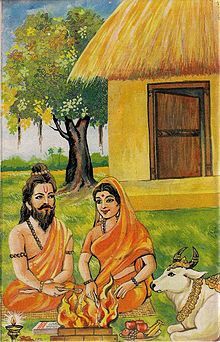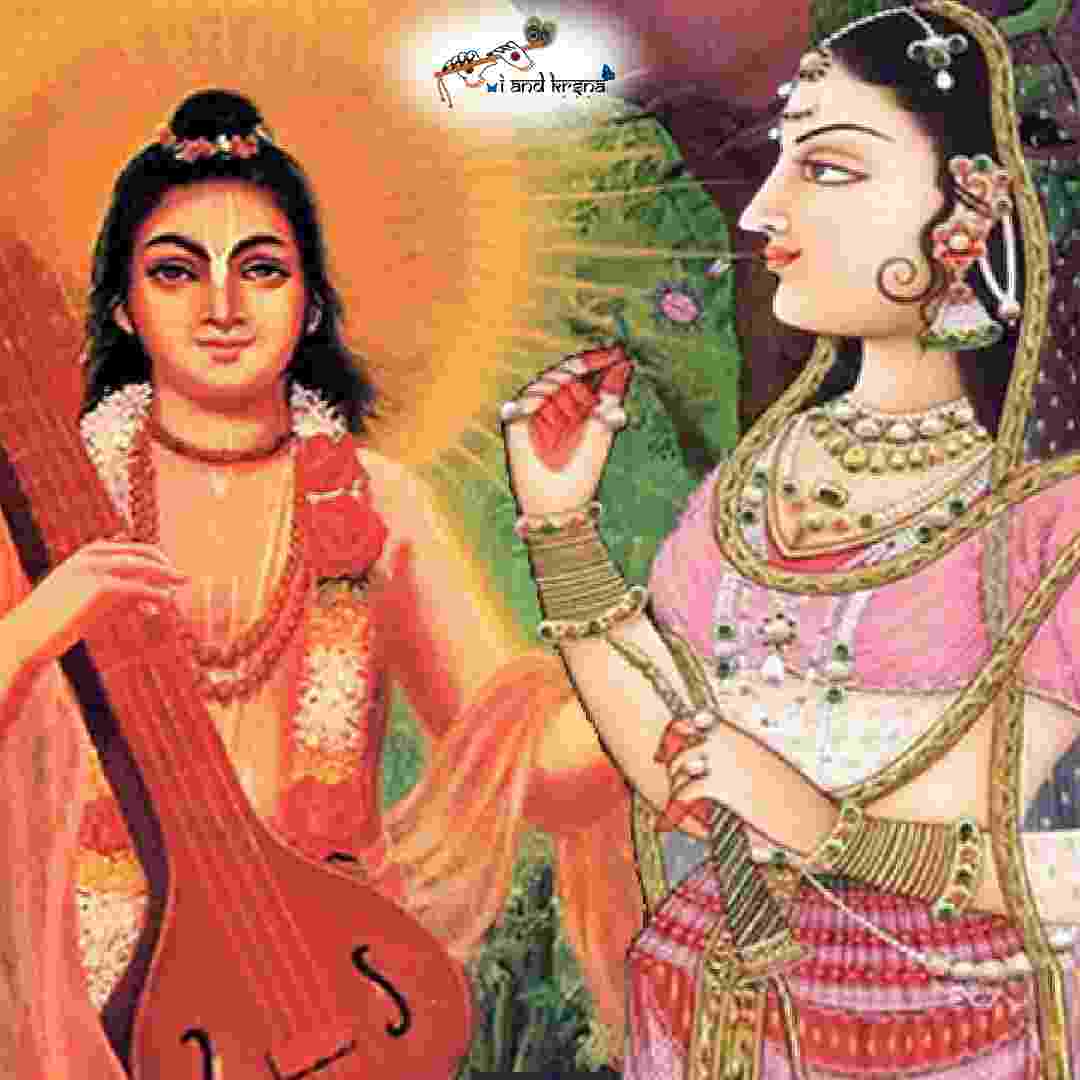Material creations of every description are more or less due to the development of the mode of passion (rajas). The mahat-tattva is the principle of material creation, and when it is agitated by the will of the Supreme at first the modes of passion and goodness are prominent, and afterwards the mode of passion, being generated in due course by material activities of different varieties, becomes prominent, and the living entities are thus involved more and more in ignorance. Brahma is the representation of the mode of passion, and Vishnu is the representation of the mode of goodness, while the mode of ignorance is represented by Lord Shiva, the father of material activities. Material nature is called the mother, and the initiator for materialistic life is the father, Lord Shiva. All material creation by the living entities is therefore initiated by the mode of passion. With the advancement of the duration of life in a particular millennium, the different modes act by gradual development. In the age of Kali (when the mode of passion is most prominent) material activities of different varieties, in the name of advancement of human civilization, take place, and the living entities become more and more involved in forgetting their real identity—the spiritual nature. By a slight cultivation of the mode of goodness, a glimpse of spiritual nature is perceived, but due to the prominence of the mode of passion, the mode of goodness becomes adulterated. Therefore one cannot transcend the limits of the material modes, and therefore realization of the Lord, who is always transcendental to the modes of material nature, becomes very difficult for the living entities, even though prominently situated in the mode of goodness through cultivation of the various methods. In other words, the gross matters are adhibhutam, their maintenance is adhidaivam, and the initiator of material activities is called adhyatmam. In the material world these three principles act as prominent features, namely as raw material, its regular supplies, and its use in different varieties of material creations for sense enjoyment by the bewildered entities.
The living entity receives different types of bodies according to karma. One living entity may receive a cat body, another a dog body, and so forth. Why are there so many different bodies? Why not one kind of body? The answer to this is also given in Bhagavad-gita (13.22):
karanam guna-sango ‘sya sad-asad-yoni-janmasu
“It is due to his association with the modes of material nature. Thus he meets with good and evil among various species.” Because the soul within the body associated with the three modes of material nature (goodness, passion, and ignorance), he receives different types of bodies. One doesn’t have to aspire for his next body; one need only rest assured that it will be a different body. On the other hand, Krishna does not say what kind of body one will be awarded. That depends on qualification. If one associates with the mode of goodness, he is elevated to the higher planetary systems. If he associates with the mode of passion, he remains here. And if one associates with the mode of ignorance and darkness, he goes down to lower life forms-animals, trees and plants. This is the proclamation of Sri Krishna in Bhagavad-gita (14.18):
urdhvam gacchanti sattva-stha madhye tisthanti rajasah
jaghanya-guna-vrtti-stha adho gacchanti tamasah
“Those situated in the mode of goodness gradually go upward to the higher planets; those in the mode of passion live on the earthly planets, and those in the mode of ignorance go down to the hellish worlds.” There are 8,400,000 species of life, and all of these arise from one’s association with the modes of nature (karanam guna-sango ‘sya). And, according to the body, one undergoes distress and happiness. One cannot expect a dog to enjoy the same happiness that a king or rich man enjoys. Whether one enjoys this or that happiness or suffers this or that distress, both distress and happiness are due to the material body.
Yoga means transcending the distress or happiness of the material body. If we connect ourselves with Krishna through the supreme yoga, we can get rid of material happiness and distress arising from the body. Reconnecting with Krishna is called bhakti-yoga, and Krishna comes to instruct us in this supreme yoga. In essence, He says, “Just revive your connection with Me, you rascal. Give up all these manufactured yogas and religions and just surrender unto Me.” That is Krishna’s instruction, and Krishna’s representative, the incarnation or the guru, says the same thing. Although Kapiladeva is an incarnation of Krishna, He acts as the representative of Krishna, the guru. If we just accept the principle of surrender unto Krishna, we will become actually transcendental to so-called material happiness. We should not be captivated by material happiness or aggrieved by material distress. These are causes for bondage. Material happiness is not actual happiness. It is actually distress. We try to be happy by obtaining money, but money is not very easily obtained, and we have to undergo a great deal of distress to get it. However, we accept this distress with the hope of getting some false happiness. If we purify our senses, on the other hand, we can come to the spiritual platform. Real happiness lies in engaging our senses to satisfy the senses of Kṛṣṇa. In this way, our senses are spiritualized, and this is called adhyatmika-yoga or bhakti-yoga.
Source: A.C. Bhaktivedanta Swami Prabhupada (2007 edition), “Teachings of Lord Kapila, The Son of Devahuti”, Page 89, 90 & 91
A.C. Bhaktivedanta Swami Prabhupada (2014 edition), “Srimad Bhagavatam”, Second Canto, Chapter 5 – Text 23





















Leave A Comment